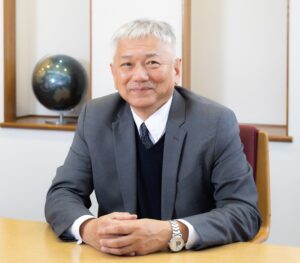HOME >
About RAP

Walking the scientific path with light
─ Drawing out the full potential of light
Director, RAP: Koichiro Tanaka
The RIKEN Centre for Advanced Photonics (RAP) is on the cutting-edge of scientific discovery, pioneering new frontiers in various fields with its groundbreaking research in photonics. We’re thrilled to announce our new motto, “Edge Photonics,” which beautifully captures the essence of our pioneering spirit. The word “edge” symbolizes our innovative approach, with its triple meaning: cutting-edge photonics, photonics at the edge (boundary area), and photonics at the network edge. In the cutting-edge photonics, we are at the forefront of ultra-precise optical lattice clocks and developing materials science research using attosecond lasers. The development of quantum electronics in the terahertz range is also a promising area of research in the future. Photonics in the boundary research area provides new means of observation and analysis necessary for solving fundamental problems in the life sciences and the universe. In the field of photonics at the network edge, we are exploring the potential of artificial intelligence (AI)-based photonics, which is a highly advanced area that connects the digital and physical worlds.
 MissionsNew light for new science and technology.
MissionsNew light for new science and technology.
 OrganizationRIKEN Center for Advanced Photonics is composed of Four groups.
OrganizationRIKEN Center for Advanced Photonics is composed of Four groups.
 PublicationsPamphlets and other publications in PDF are available here.
PublicationsPamphlets and other publications in PDF are available here.

